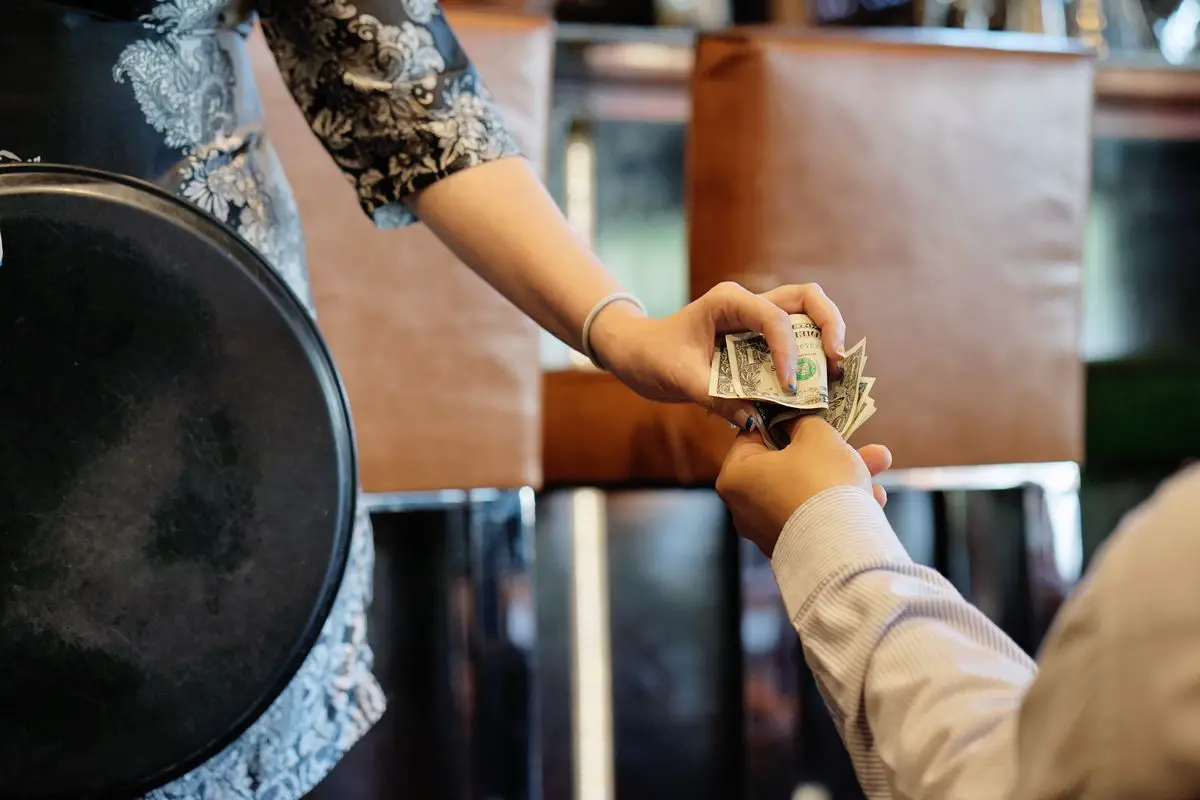It’s no surprise that many Americans are frustrated and confused about the new rules regarding tipping culture. The rapid growth of tipping culture during the COVID-19 pandemic astonished everyone, even those working in jobs primarily compensated by tips. As a barista, I am routinely tipped by customers, which is a nice addition to my paycheck. When I first began working in a tipping culture, it was customary to tip the barista only the coin change received back from the transaction, and there was no option to tip using a debit or credit card. Now, many point-of-sale systems include an option to tip for a service, even if no service was rendered. Leaving a 20-25% tip for a server in a restaurant has been the cultural norm in the United States for decades, but nowadays we aren’t sure if we should be tipping on take-out orders or in the self-checkout lane. More and more places offer an option to tip. Figuring out why, when and how much to tip has become complicated and has led to widespread pushback on tipping culture from society at large.
The history of tipping in America has its roots in slavery. The practice of tipping was brought to the United States by Americans traveling in Tudor England, where tipping was practiced as a part of the master-serf relationship. Aristocrats would reward servants with a gift of extra money for exceptional service, making peasants stoop to subservience to earn a wage. In the 1850s, tipping was considered deeply un-American and undemocratic. But in the wake of the Civil War, the cultural tide began to change. Formerly enslaved people were legally barred in many states from having any jobs besides sharecropping or serving as barbers, hotel staff, porters, servants or waiters. They were forced by law to work in menial jobs with a base pay of $0, surviving on what tips white Southerners condescended to dole out.
Tipping culture can be considered a product of slavery in that it effectively created a servant class that was economically and socially subordinate. Tipping rose to popularity in the early 1920s, spreading from the South to the Northern states. In 1966, the federal government officially sanctioned the inferiority of employees in tipping jobs when legislation was codified into law, dividing employees into two types and allowing industries to pay one type of employee a lower hourly wage. This social and legal divide continues to this very day.
Understanding how Americans get paid can help consumers decide whether to tip. The United States has two basic types of employees, non-tipped and tipped. Non-tipped employees are paid at least the federal minimum wage, which is currently $7.25 an hour. The purpose of the federal minimum wage is to stimulate the American economy and keep workers out of poverty. Baristas, cooks, grocery store workers and ice cream scoopers are all examples of non-tipped employees; they are paid at least the federal minimum wage. I don’t usually feel an obligation to tip people in those industries for their service unless they perform exceptionally. However, our society has many industries where the employees are dependent on tips to supplement their income, because federal regulations state that tipped employees can receive a lower minimum wage than non-tipped employees. Tipped employees include waiters, hotel housekeepers, taxi drivers, bartenders and cloakroom or bathroom attendants.
By 1880, almost half of all employees in hotels and bars were African-American; Today, two-thirds of employees in those industries are women. 18 states pay tipped employees the federal tipped employee minimum wage, which is $2.13 an hour. A person with a job in the service industry can work a full 8-hour day to earn a total of $17.04 before taxes. Several other states require businesses to pay tipped employees $3-$4 an hour. Only seven states have regulations legally requiring businesses to pay all employees their state minimum wage. The federal tipped employee minimum wage was raised to $2.13 in 1991 and has remained the same pittance ever since.
$2.13 an hour is not a living wage for any person, leading employees working at underpaying businesses to rely on customer generosity to supplement the fiscal difference needed for survival. They also rely on management to schedule lucrative shifts for them, creating another power imbalance to the detriment of the tipped employee. Businesses that pay tipped employees low federal and state minimum wages are ultimately offloading the workers’ need for a living wage onto the public. Vulnerable employees are forced to submit themselves to humiliating treatment from customers because the employee is dependent on customer tips to survive. This discrepancy continues outside of work, as people working for tips are much more likely to live in poverty. This troubling power dynamic plays out across the nation daily, with millions of tipped employees struggling to make ends meet. When I am served by a person in a service position, I make sure to tip an appropriate amount for their labor. Since the pandemic, a 25% tip in restaurants is now appropriate for good service.
Tipping culture is ripe for abolishment in the United States. The percentage that is considered a fair tip is at an all-time high, as is societal pushback on tipping when no service is rendered. Articles are published weekly, questioning the “new norm” in tipping. It would be beneficial to our society to put an end to tipping culture, bringing all working Americans to minimum wage or higher. Studies have shown that raising the minimum wage reduces poverty and closes the wealth, gender and racial income gaps. Closing these gaps benefits all Americans, as their reduction is correlated to reduced crime rates, healthier children and overall happier and more secure lives. To change the current tipping trend, we can petition our federal government representatives to submit legislation to put an end to the division of employees into non-tipped and tipped categories. We can demand that all people employed in the United States deserve at least a livable minimum wage. Immense changes are needed in our federal legislation to ensure that all people in the United States can thrive.
















